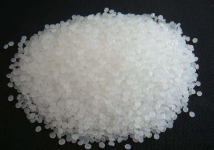read: 500 time:2025-07-03 14:23:47 from:化易天下
In the realm of organic chemistry, understanding the basicity of various compounds is crucial for predicting their behavior in chemical reactions. A common question that arises in this context is: why pyridine is more basic than aniline? This article delves into the structural and electronic factors that contribute to this difference in basicity, providing a clear and detailed explanation.
To understand why pyridine is more basic than aniline, we must first look at their molecular structures and hybridization. Pyridine is a six-membered aromatic ring with one nitrogen atom replacing a carbon atom in benzene. The nitrogen atom in pyridine is sp2 hybridized, which allows it to maintain a lone pair of electrons in an unhybridized p orbital. This lone pair is not involved in the aromatic pi-system, making it readily available for protonation.
Aniline, on the other hand, consists of a benzene ring attached to an amino group (–NH2). The nitrogen atom in aniline is also sp2 hybridized, but its lone pair of electrons is partially delocalized into the aromatic ring due to resonance. This delocalization reduces the availability of the lone pair for protonation, thereby lowering the basicity of aniline.
The electron delocalization in aniline significantly impacts its basicity. In aniline, the lone pair on the nitrogen can participate in resonance with the π-system of the benzene ring. This resonance delocalization stabilizes the lone pair, making it less available to accept a proton. As a result, aniline is less basic compared to pyridine, where the lone pair on nitrogen is localized and free to engage in protonation.
In contrast, pyridine’s nitrogen lone pair is not part of the aromatic system and remains in a p orbital that is perpendicular to the plane of the ring. This localization of the lone pair makes it more readily available for accepting a proton, thus increasing pyridine’s basicity.
Another factor to consider when exploring why pyridine is more basic than aniline is the inductive effect. In pyridine, the nitrogen atom is more electronegative than carbon atoms, which causes a slight withdrawal of electron density from the ring. However, this effect is not strong enough to significantly reduce the availability of the lone pair on nitrogen for protonation.
On the other hand, in aniline, the amino group is directly attached to the benzene ring, which can lead to hyperconjugation and further electron delocalization. This additional electron withdrawal from the nitrogen’s lone pair further decreases its basicity, making aniline less basic than pyridine.
Basicity can also be understood in terms of proton affinity, which is the tendency of a molecule to attract and bind a proton. Pyridine has a higher proton affinity compared to aniline because the nitrogen’s lone pair is more readily available. In aniline, the lone pair is partially occupied in maintaining the resonance structure with the benzene ring, thus reducing its proton affinity.
Therefore, when comparing why pyridine is more basic than aniline, the key factor is the availability of the lone pair on the nitrogen atom for protonation. Pyridine’s nitrogen has a lone pair that is free and not delocalized, leading to higher basicity. In contrast, aniline’s nitrogen lone pair is delocalized into the benzene ring, reducing its availability and hence its basicity.
In summary, the reason why pyridine is more basic than aniline lies in the differences in electron delocalization, resonance effects, and proton affinity. Pyridine’s nitrogen retains its lone pair of electrons in a way that makes them more accessible for protonation, leading to higher basicity. Aniline, with its delocalized lone pair due to resonance with the aromatic ring, exhibits lower basicity. Understanding these molecular-level interactions provides valuable insight into the reactivity and behavior of these compounds in various chemical contexts.

Jincheng Petrochemical's 300000 ton polypropylene plant successfully trial production, 2024 polypropylene market analysis

The ABS market remains sluggish, what is the future direction?

Market differentiation of bisphenol A intensifies: prices rise in East China, while prices generally decline in other regions

The production method and process flow of silicone acrylic lotion, and what are the common raw materials